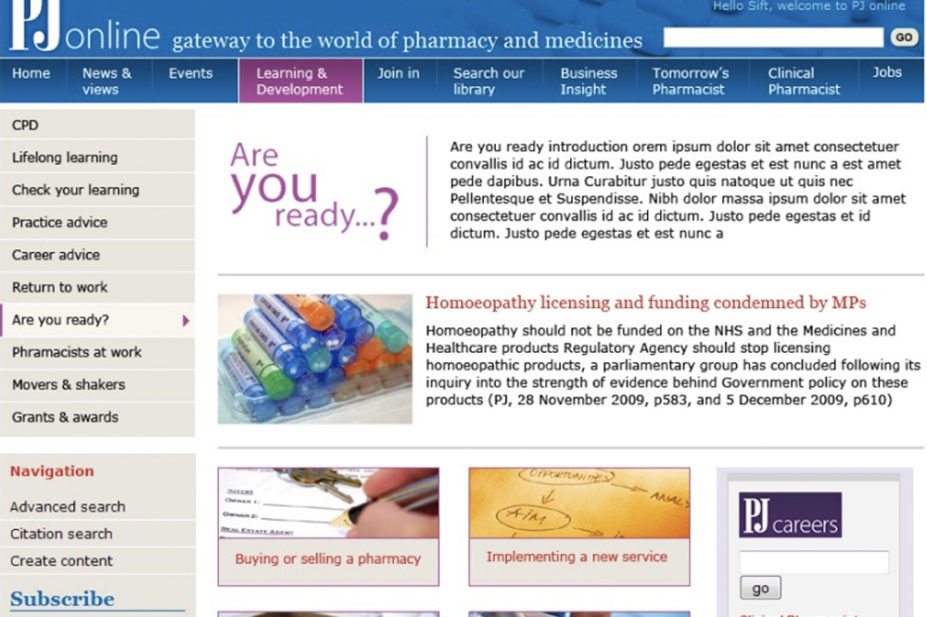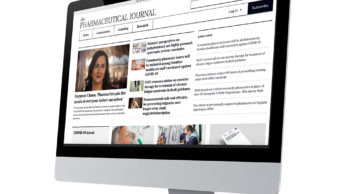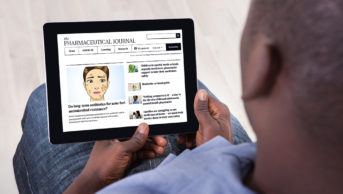
In the two weeks since launching the new digital edition, more and more members are visiting these pages each day for the first time. It is hugely exciting for the editorial team and colleagues across the Society to have members engage with the new digital PJ.
The launch of the site was a success and we are pleased to see that members have adapted with ease to the changes we have introduced to the login, navigation and presentation of articles.
One question that has arisen is that links to some content published before September 2014 are no longer working, raising concerns about how we manage the digital archive — which goes back to 1999 — on our new platform.
I want to reassure our members and subscribers that none of these articles have been deleted or lost; rather, the reason that some content is unavailable at the moment is that we are systematically processing our digital archive to improve how this older content is presented online, so it appears in the best way possible and works in the same way as our most recent content.
In response to feedback about how users want to access our content, we are now presenting it according to subject categories. One example is our new resource ‘hubs’ that are dedicated to a medical condition or career stage. This approach also enables a more personalised experience, such as presenting articles related to your interests; for example, on the latest news on pharmacy in Scotland.
When migrating content that was published before 2014, we wanted to make sure we didn’t perpetuate the problems experienced on the previous site with content not being available in full, with images and tables not being displayed properly and broken links to PDFs. We have already migrated research content on to our new platform and we are actively working on processing the remaining archived content. You will see improvements day by day over the coming weeks.
If you have found a link to our archive that is no longer working, please do get in touch by emailing pharmpress-support@rpharms.com and a member of the team will be able to address your query and provide a new link when available.
The birth of digital
The internet age arrived for The Pharmaceutical Journal in the late 1990s when six news articles produced for the print edition were hosted on the Society’s main website. It was in 1998 that work began to develop the PJ’s first dedicated website and the following year the ‘PJ online’ was born. Only a small proportion of the content published in print was carried on this first website.
The desktop computers and dial-up modems of those days offered a much slower experience than readers have come to expect today with ubiquitous broadband and smart devices. Technology has also brought big changes to how we produce content. An ‘article’ today means more than just the words that appear to the reader; it includes metadata that details the type of content (news versus research), the structure of the content (headline versus body copy, for example) as well as including a subject hierarchy, or taxonomy, to enable it to be searched for and ensure related content can be automatically collated and presented back to the reader.
But in the first decade or so after the first digital versions, editorial processes were still engineered to produce the print pages and the editorial team were very much geared towards getting the print pages to press. The digital bit happened afterwards. This ‘print-first’ design also meant there were varying ways of presenting the content online: some articles would appear in full, while other articles would be cut short and only include a headline and introduction, with readers expected to download a PDF to access the full article in a print layout.
The biggest change came in 2014 when the PJ became ‘digital first’ with the launch of ‘pharmaceutical-journal.com’ in place of the old PJ Online. Now, the convention of print was flipped on its head: all content was first produced for the website, while the print edition came later. Content produced in print now constituted a subset of the overall content produced in digital. We also had the tools to code new content in a much better way.
Back catalogue
There was also a huge back catalogue of content migrated on to the 2014 platform dating from 1999, with a different structure to the one we use today and with minimal taxonomy or metadata. The vast majority of these articles appeared incomplete on the old website, with sometimes the content only appearing in PDFs attached to an article and the page itself displaying few, if any, words and occasionally no title. And, as it is our goal to deliver the best experience possible for all our editorial content on the new digital PJ, we are in the process of manually extracting the content from the old PDFs and processing each article as if it was a new piece of content, which will ultimately bring the benefits of the modern new site to that old content.
While our digital archive is not used as much as more recent content, it is no less important. As part of the launch plan for the new PJ, we processed the PDFs in the digital archive for our research article content and that content set is now on the new website and is working far better than it did previously. The work we are doing at the moment rolls that approach out to our ‘clinical content’, which is also being assessed for its suitability, as clinical guidance may have changed since its original publication. This will happen before we review other sets of content, such as news.
Another important benefit of this process is that it provides the editorial team with an opportunity to identify content that would benefit from being updated. However, this will not mean that older pieces become unavailable; once processed, they will be easier to search and access and help signpost you to other related useful content.
For those of you who have been unable to access an article from our digital archive, I am sorry for the inconvenience this will cause, but do get in touch at pharmpress-support@rpharms.com so that we can prioritise the most pressing content to update.
It will take some time to complete this important work but it will hugely improve our digital archive. And then there is the not insignificant matter of the best way to digitalise our invaluable print archive from the past 180 years.


